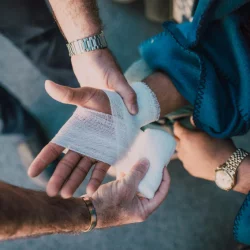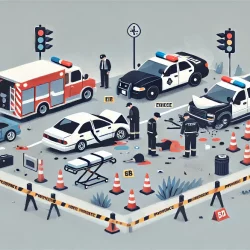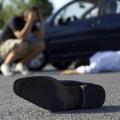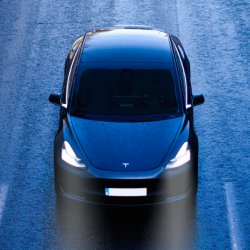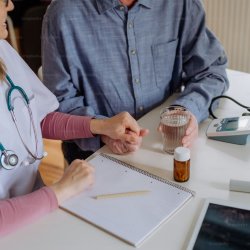How Do You Prove a Distracted Driver Caused Your Accident?
All too often, people are distracted while driving. They are looking at their phones, switching playlists, or eating a burger they just bought at the drive-through. Distracted driving is the cause of thousands of deaths each year in America, and even more injuries. Whatever it is that is distracting you in a car, it is not worth the life or safety of you and everyone else, not only those in your vehicle, but those outside as well.
What is considered distracted driving?
Distracted driving refers to any activity that diverts a driver's attention away from the primary task of operating a vehicle. This diversion can significantly increase the risk of a traffic crash. Here are some common examples of distracted driving:
- Texting and using a smartphone. Texting while driving is one of the most dangerous and common distractions. Reading or sending text messages takes your eyes off the road, hands off the wheel, and mind off driving.
- Using a GPS or navigation system. Programming a GPS or looking at the map on your phone while driving can be distracting. It's best to set your destination and navigation system before you start driving, or to pull over when you’re lost before looking at a map.
- Eating and drinking. Even eating a breakfast bar or burrito can take your attention off the road long enough for an accident to happen; not to mention how food tends to occupy your hands as well, meaning less control of the wheel.
- Grooming. Applying makeup, fixing your hair, or even shaving while driving can be hazardous.
- Adjusting the radio or changing music. Fiddling with the radio, changing CDs, or scrolling through playlists can divert your attention.
- Talking to passengers. It seems normal to have conversations with the people in your vehicle, but it can be dangerous, especially if they require your visual attention. Your eyes and your attention can be pulled from the road.
- Daydreaming. When driving becomes so normal and daily, it’s easy to fall into a sort of trance while driving, allowing your mind to wander. This means that you are not focusing on the task of driving.
- Rubbernecking. While it is hard to resist sometimes, slowing down to look at accidents or other roadside incidents can cause traffic problems and accidents.
- Using in-car technologies. Some in-car “infotainment” systems can be distracting if they require complex interactions while driving. Modern cars have a lot of settings and touch-screen selections that can take your eyes off the road, and your hands off the wheel.
- Reaching for objects. Trying to grab something that fell on the floor, reaching into the backseat, or searching for items in the glove compartment can divert all of your attention away from the pavement in front of you.
It's important to note that distracted driving can have serious consequences, including accidents, injuries, and even fatalities. Many states (including South Carolina) have implemented laws and regulations to discourage and penalize distracted driving, particularly texting while driving. To stay safe on the road, it's essential to keep your full attention on driving and avoid any activities that could distract you.
How do I prove the other driver was distracted?
Proving that the driver who caused your accident was driving distracted can be challenging, but it's possible with the right approach and evidence.
Steps to help you gather proof of distracted driving include:
- Get an attorney. An experienced personal injury attorney can help you navigate the legal process and gather evidence to support your case. They may also have access to resources and experts who can assist in proving distracted driving. Attorneys make proving distracted driving a lot easier.
- Gather eyewitness accounts. If there were any witnesses to the accident, talk to them and ask if they saw the other driver engaged in distracting activities. Eyewitness accounts can be powerful evidence in court.
- Call the police. After an accident, it's essential to report it to the police. They will typically conduct an investigation, which may include speaking to both drivers and any witnesses. The police report may include information about distracted driving if it was a contributing factor.
- Take photos. If it's safe to do so, take photos or videos at the accident scene. Capture any evidence of distracted driving, such as the driver using a smartphone, eating, or engaging in other distracting activities.
- Request phone records. If you suspect that the other driver was using their phone at the time of the accident, you may be able to obtain their phone records through legal means. These records can show call logs, text messages, and internet usage.
- Retrieve dashcam footage. If you or the other driver had a dashcam installed in your vehicle, it could provide valuable evidence. Dashcam footage can show the moments leading up to the accident, including any distracting behavior.
- Review social media. Check the other driver's social media profiles for any posts or updates made around the time of the accident. Some people post about their activities while driving, which can serve as evidence.
- Subpoena electronic data. In some cases, it may be necessary to subpoena electronic data from the other driver's smartphone or vehicle if you believe it contains evidence of distracted driving. Your attorney can guide you through this process.
- Compile medical records. If you sustained injuries in the accident, your medical records may also contain information about the accident's cause. If the doctor notes that you were hit by a distracted driver, it can strengthen your case.
- Depose the other driver. Your attorney may depose (interview under oath) the other driver, during which they can ask questions about their actions leading up to the accident. Inconsistencies or admissions of distracted driving can be used as evidence.
Remember that proving distracted driving can be complex, and each case is unique. Help from a legal professional will help you the most if you are looking to receive a significant amount in compensation from the at-fault driver.
More to Read:
Previous Posts:
